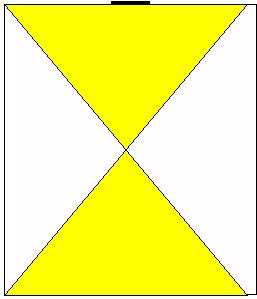
Theoretical approach to the sitting problem

Framework
We define an abstract object to represent a lecture hall:
L:= < N,K,W >
Where:
Assumptions:
Model 1
Assumptions:
The agents choose the best seat, attempting to maximize their utility function that is given by:
Ui = -( a t + (1-a )b )
Where:b
= K-yWhen agents are more concerned with minimizing their distance from the screen (or lecturer), a would be relatively small.


We can see that in this regime the agents bunch near the front, which is not surprising.


Starting with a simple model, which we could solve analytically, we are thus able to derive solutions for some extreme cases. We can extend this particular model by introducing heterogeneous agent population.
Extension:
If we imagine that the agents differ according to a values (e.g. a = Þ "Psyched" a = 1Þ "slackers")
We find:

Results robust to different functional forms (?), Realistic (?)
Model 2
Say people enter in a sequence of small groups, which want to sit in certain arrangements:

Assumptions:
Results:
Conjecture: Strategic interaction may result in efficiency.
Iris Ginzburg
Asim Khwaja
Justin Smith
16 June 1998